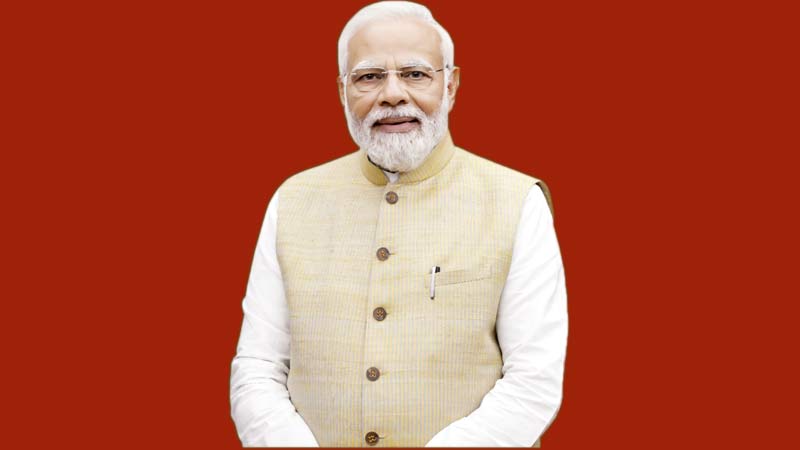This is the period in the history of India when the country is going to take a quantum leap” “For India, this is the time, right time (Yahi Samay hai, Sahi Samay hai)”
-Prime Minister Narendra Modi
Prime Minister Narendra Modi, on 11th December 2023, launched the Viksit Bharat@2047 initiative, while emphasizing upon the vision of securing the “developed country” tag for India by 2047. The initiative encompasses various aspects of development, including economic growth, social progress, environmental sustainability, and good governance.
The vision of Viksit Bharat recognizes the fact that India is presently standing at an important juncture of economic and human development and that the next 25 years are instrumental in deciding India’s future in the long run. It foreshadows a future India from its forgotten past when India was considered a golden bird and excelled in trade as well as civilizational achievements with progress in education, medicine, astronomy, and all fields of significance. Since ancient times, India was a land of fertility, prosperity and progress inspiring other societies across the world. However, external pressures as a result of continuous invasions as well as gruesome colonial rule left India battered, bruised, and wounded. This is the vision of taking India back to its original position of being a Knowledge hub, an Economic Powerhouse and a Vishwamitra.
Why is this the ‘Amrit Kaal’ for India?
Amrit Kaal refers to the coming 25 years of the golden centenary of India’s Independence i.e., 2047, the 100th year of our Independence. These 25 years are a chance for India to achieve the vision of ‘Viksit Bharat by 2047 and ensure better living conditions, rapid growth as well as infrastructural and technological advancements.
India is one of the youngest nations in the world ready to reap demographic dividends. Therefore, it is the right opportunity for India to leverage its demographic dividend and channel its energy to achieve the dream of Viksit Bharat. Prime Minister Narendra Modi has rightly reflected that the Youth of today are the ‘agents of change’ and are going to be the ‘beneficiaries of change’. The Modi government has heavily focussed on connectivity within India and outside India. Today, when all of the Global North is facing recessionary economies, India has witnessed over 7.6% economic growth. Furthermore, India is committed to becoming the 3rd largest economy in the coming years. Therefore, it is the right time for India to take collective steps to realise the dream of Viksit Bharat.
“Panch Pran’ in Amrit Kaal
Although India achieved Independence long ago, Indians were largely under a colonial hangover with a sense of defeatist mentality. There was a lack of collective mission to drive towards innovation and upliftment. The erstwhile dispensation under INC and its ecosystem had built a self-doubting narrative where it was frowned upon to wear national pride and feel proud about the civilisational achievements. This created negativity and stifled growth. The Prime Minister, Shri Narendra Modi, in his address to the nation from the ramparts of the Red Fort on Independence Day 2022, has called on the nation to commit to ‘panch pran’ in the coming 25 years of the ‘Amrit Kaal’ which are as follows:
–A resolve of developed India
–Removing any trace of the colonial mindset
Taking pride in our legacy
–Our strength of unity
–Fulfilling the duties of citizens with honesty
Among the ‘panch pran’, he clearly called for removing every trace of the colonial mindset while pursuing the goal of developed India. In the actions of the Modi government, one can see continuous efforts aimed at getting rid of the symbols of slavery. While Rajpath has been renamed as ‘Kartavya Path’ and Netaji statue occupies the place where the King George V statue was placed, many more initiatives have already been taken to pave the path of a ‘New India’. The renaming of Race Course Road to ‘Lok Kalyan Marg’, the echo of Indian patriotic songs at the Beating Retreat ceremony, the adoption of the symbol of Chhatrapati Shivaji Maharaj by the Indian Navy by removing the ensign of slavery; the building of the National War Memorial, the change in time and date of the presentation of the Indian Budget, which had followed the times of the British Parliament for so many decades; liberating the students from the compulsion of foreign language through NEP; and the abolition of many obsolete colonial laws are some of the initiatives taken by the Modi government to get rid of the slave mentality that has haunted India for so many decades.
While one of the ‘panch pran’ calls for removing all traces of the colonial mindset, another one calls for taking pride in the nation’s roots and the great legacy of India. It is in pursuance of this pledge that the legacy of the freedom movement, by building the Statue of Unity, renaming the islands of Andaman after Netaji Subhash Chandra Bose, building PM museum, museum for Tribal freedom fighters, Babasaheb’s ‘Panchtirtha’, imparting grandeur to cultural and civilizational centres across India are some of the efforts which are not only creating a robust cultural infrastructure in the country by modernising India with the spirit of ‘Amrit Kaal’. The name ‘Rajpath’ which was the Hindi translation of the colonial ‘Kingsway’, indicated a mindset that wanted to rule over the people while the name ‘Kartavyapath’ reminds the citizens of the duty expected of them in realising the dreams of a developed India. In his ‘panch pran’, the Prime Minsiter, Shri Narendra Modi, has immensely emphasised the importance of inculcating a strong sense of duty towards the nation.
Under Shri Narendra Modi, there is wide enthuisasm amongst all sections of society and India is being considered as a serious player at the global level. With a sense of renewed energy and mission, it feels like India has achieved true Independence in 2014, with a clear vision. There is a clear policy and direction in governance and Indians have started wearing their identity proudly on their sleeves while celebrating our historical civilisational might.
How will we achieve the vision of Viksit Bharat?
Prime Minister Narendra Modi has laid down a detailed trajectory to attain the vision of Viksit Bharat by 2047. The focus of the Viksit Bharat Mission would rest upon energising GYAN, i.e., Garib, Yuva, Annadata, and Nari Shakti while leveraging upon India’s demographic dividend.
Garib (Poor)
Even after 68 years of independence, i.e, in 2015, nearly 25% of Indians were multidimensionally poor. However, sustained efforts of the Modi Government, in the past 10 years have enabled more than 25 crore people to break out of the chains of multidimensional poverty. This has been due to poverty alleviation measures including the Pradhan Mantri Garib Kalyan Yojana, which has ensured food security
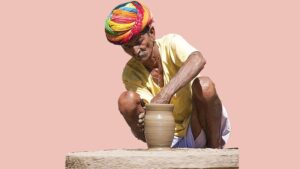
for over 80 crore poor Indians, and the Pradhan Mantri Awas Yojana, under which 2.94 crore houses have been built in rural areas, whereas 1.12 crore houses have been built in urban areas.
The Government has realised that certain basic necessities like clean water, sanitation and health are indispensable in the process of manifesting the goal of making India into a “developed country”, and thus, programs like the Jal Jeevan Mission and the Ayushman Bharat Mission have played definitive roles. While over more than 14 crore tap water connections have been provided to rural households under the Jal Jeevan Mission, over 50 crore Indians have been insured under the Ayushman Bharat Mission, thus securing public health and basic hygiene for the poor in the country.
Furthermore, emphasis has been laid on ensuring financial inclusion of the poor. For instance, over 50 crore Jan Dhan Accounts have been created, covering over 99% of Indian households, which have facilitated leakage-free transfer of more than Rs. 34 lakh crore under 312 welfare schemes. These Jan Dhan accounts, alongside the Direct Benefit Transfer mechanism used by the Government, have ensured welfare is enjoyed by the final beneficiary, without it falling prey to corruption, as was the case with erstwhile Governments, wherein only 15 paise, out of every 1 rupee, reached the intended beneficiaries.
Having secured basic human needs of shelter, food, and sanitation, the Government has also gone to great lengths to generate employment opportunities for the poor. For instance, the Modi Government launched Garib Kalyan Rojgar Abhiyan which boosted employment and livelihood opportunities for over 50 crore migrant workers and youth working in rural areas. Moreover, PM Svanidhi ensured street vendors with capital loans so that they could resume their businesses.
Therefore, today when the poor have been alleviated to better living conditions and are ensured security with dignity, the aim is to leverage their potential and make India inclusive in its development. To ensure this holistic development, the Government with its policy “Act for North-East and Act First for North-east” has developed an inclusive environment for the north-east people living in poverty and facing discrimination due to political neglect.
Yuva (Youth)
The envisioned goal of Viksit Bharat by Prime Minister Narendra Modi lies on the bedrock of Youth who have the potential to revolutionize the nation and bring positive development. The next 25 years are akin to the 25 years between 1922 and 1947, during which the Indian freedom struggle reached its peak and had a watershed moment in 1947, thus securing India its independence.
Similarly, India needs to leverage the potential of its Amrit Peedhi, i.e., the youth of India, who shall herald India into Viksit Bharat. For instance, the National Education Policy was introduced in 2020 and the Union Budget for FY 2023-24 too, has highlighted ‘Amrit Peedhi’ as a priority under the ‘Saptarishi Goals’.
To ensure the vision of being job providers from job seekers, the platform of Mera Yuva Bharat was launched, which provided youth with tech-savvy skills. It gave the youth a ‘Phygital Platform’, an opportunity to connect digitally while exercising physical activity. Moreover, thousands of Atal Tinkering Laboratories were established in schools with innovative Skill India International Centres set up across different States to foster curiosity, creativity, and imagination.
The Youth of the country is vigilant, motivated, and contributes immensely to the growth of the nation and Indian youth are one of the most sought-after skilled resources in the world. Therefore, it is very important to channel the invigorating energy and innovative ideas of youth in the future nation-building.
Annadata (Farmers)
After Independence, India went into acute food shortage as it was highly dependent upon monsoon and natural calamities resulting in crop failures. Today, India has been witnessing robust growth in this sector in the last six years and has become self-reliant.
The Government has also taken steps to enhance the income support of the farmers through the PM-KISAN Scheme and ensured crop insurance through the PM Fasal Bima Yojana. Moreover, the e-NAM initiative has provided farmers with open access to markets across the nation to enable them to get more remunerative prices.

Further, the introduction of ‘One Nation, one Fertiliser’ under the brand name ‘Bharat’ in the entire country has facilitated the availability of fertilizers with reduced costs. This indicates a vision of ensuring modern technology and transparency is inculcated in agriculture practice. This sector is now being seen with a scientific approach rather than a political sighted solution.
Now, Indian agriculture has become a consumption-driven sector in place of a population-driven sector, the Indian farmers have become multi-skilled, and small farms are multifunctional. The future Vision of India is to return to sustainable mechanisms of farming, for instance, the Natural Farming initiative has been taken up by the Modi government along with the promotion of allied sectors like fisheries, poultry, dairy, horticulture, pearl and weed farming.
Nari Shakti (Women Empowerment)
Women have been held in high regard in Indian civilisation and the testimony lies in female protagonists in ancient texts, reverence towards female deities who are shown as powerful and the sculptures in temples. The Modi Government since its inception has hailed women as Shakti avatars and ensured their needs are met while upholding dignity and development in the nation.
It passed the Nari Shakti Vandan Bill that reserved one-third of the seats of Lok Sabha and State Assemblies for women. Moreover, to ensure the safety, security, and empowerment of women, an umbrella scheme named ‘Mission Shakti’ was launched, it addressed issues affecting women on a life-cycle continuum basis. The initiatives of the Modi government have increased women’s literacy significantly and reduced
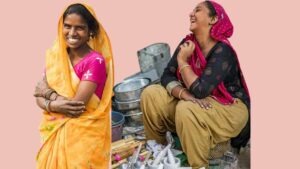
the infant mortality rate drastically. Moreover, the Government has also taken various measures to improve the menstrual hygiene of women. For instance, over 9000 Janaushidi Kendras were set up across the country to provide oxy-biodegradable sanitary napkins named Suvidha only for Re.1.
Additionally, out of 4 crore houses built under the PM-AWAS yojana, 75% of houses are either solely or jointly owned by women. It is very evident that India’s future has a special place for women and ensuring their participation in contribution across all sectors has put us on the path towards progress. This was necessary via a paradigm shift in the outlook of viewing women’s condition not from a victim mentality but rather as envisioning them as leaders of growth and development in various fields..
Most of the schemes targeted towards families have women as the center of the beneficiary, signaling that women hold the key to the household as well as the progress of the family. The Government, understanding the critical importance of cleanliness for women, launched the Swachh Bharat Abhiyan which provided over 12 crore toilets in all households. Also, the Government built over 10+ crore LPG connections under the PM-Ujjwala Yojana.
Now, after ensuring the security and empowerment of women, the further aim is to develop an ecosystem that supports women heralding an era of ‘women led development. To pursue this vision, the Government has launched PM Mudra Yojana and Startup India. Startup India envisions promoting entrepreneurship amongst Women and helping them in starting a greenfield enterprise. In 2024, more than 84% of the beneficiaries of Standup India were women and more than 68% women entrepreneurs under the MUDRA scheme.
Thus, today, the Government has launched various initiatives ranging from Aatmanirbhar Bharat Abhiyan to Panchamrit Goals, however to attain the complete success of these initiatives, it is the ‘Sabka Prayas’ that would lead us to attain the state of ‘Viksit Bharat’. Therefore, it is the bhagidaari of every individual doing his prescribed duties to the optimum level that would lead us to realize our collective dream of a Developed Nation by 2047.
In the following pages a saga of achievements in various sectors is being published for our esteemed readers which may give a deep insights into the developmental initiatives taken by Modi-government for realising the vision of Viksit Bharat @2047.
Garib Kalyan
MODI’S
GUARANTEE
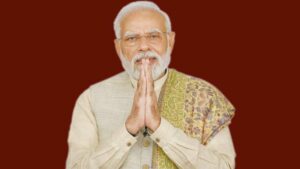
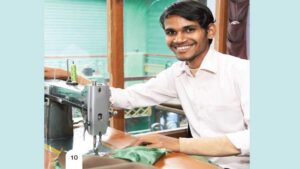
–India was able to pull 25 Crore people out of poverty during the Modi government tenure, as poverty fell by 17.89 percent.
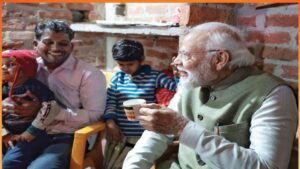
–Free food grains were made available to 81.35 Crore Indians through the PM Garib Kalyan Anna Yojana.
–Under P.M.A.Y. program, almost 4 Crore pucca houses were constructed, with 75% of them being owned by women.
–More than 31 Crore Ayushman Bharat cards were issued, resulting in about 6 Crore patients receiving free care.
–11.09 Crore families received tap water connections to the Jal Jeevan Mission, improving living standards and altering social dynamics.
Ensuring guarantee of Dignity:
–The Modi Government has constructed more than 11.45 Crore toilets under Swachh Bharat Mission Gramin and India has become ODF (Open Defecation Free) country.
–Through the Ujjwala programme, the Modi government has contributed significantly to the health and well-being of women by providing 12.46 Crore free LPG connections.
–Through the Saubhagya Yojana, energy connections have empowered over 2.6 Crore households.
–The Modi government’s initiatives like Pradhan Mantri Jeevan Jyoti Bima Yojana, Pradhan Mantri Suraksha Bima Yojana, and Atal Pension Yojana are establishing a comprehensive social security ecosystem with over 16 Crore, 34 Crore, and 5 Crore enrollments, respectively, by April 2023.
–Between 2013–14 and 2023–24, the Modi government boosted the budgetary allotment for social welfare by more than 200% under the Ministry of Social Justice and Empowerment.
Guarantee of Economic Empowerment:
–The PM-SVANidhi Scheme helped over 61 lakh vendors who were provided loans worth Rs.10,716 Crore, aiding economic reconstruction of the unorganized sector post-Covid pandemic.
–Through JAM Trinity (Jan Dhan-Aadhaar-Mobile), a direct benefit transfer (DBT) of Rs. 34 lakh Crore put an end to corruption, and intermediaries were removed.
–The Modi government has ensured last-mile financial inclusion through the PM Jan-Dhan Yojana, more than 50 Crore Jan-Dhan bank accounts in rural and semi-urban areas.


